Permaculture: History of an idea
In general, the aim of the following is to clarify some myths about permaculture, farming traditions and cultural landscapes. At the same time, we intend to retrace the path which the concept of permaculture has followed, enabling it to become what it is today – a future-proof way to look after our planet. Some persons of influence with their thoughts and approaches will help us in this regard.
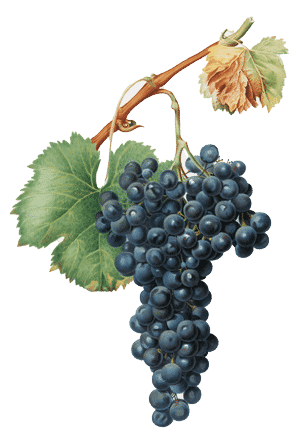
Humankind has always been shaping the world according to its visions and needs. This is true for nomad as well as settled cultures. For many millennia, populations of people have farmed the land they live on – in Central Europe for 5,500 years. They have learnt to domesticate animals, grow plants, store provisions and mount infrastructures.
Virtually every piece of land – especially in Europe – has been influenced by mankind and been turned into a cultural landscape. The fact that quite often we do not recognize one as such any more is simply because we know nothing other than cultivated landscapes –real or even unspoiled natural landscapes barely exist any more.

We live in the Anthropocene, a geological age in which mankind has become one of the most important influencing factors in the biological, geological and atmospheric processes that take place on our planet.
As John R. McNeill, the famous environmental historian, pointed out, while the 20th century corresponded to just 0.0025% of the entire history of humanity, it nonetheless also amounted to 20% of all the humans who have ever inhabited our world.

Cultural landscapes look very different and have distinct features depending on the prevailing culture, topography, climate, etc. In times when humans did not yet have access to external energy sources, only sustainable systems could endure. Most systems of this type have long disappeared, although some, like the terraced rice fields in Southeast Asia or the oak woodlands of the Spanish dehesa, have endured for at least 4,000 years and still function largely along the same principles and concepts as they did when first created.
These man-made agricultural systems turn solar energy into food and other raw materials like potential fuel or construction materials.
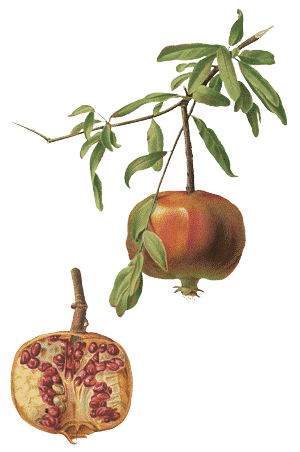
In the second half of the 19th century, and even more so in the 20th century, the character of agriculture changed fundamentally and rapidly. The use of fossil fuels and mineral fertilizers drastically impacted rural agriculture in large parts of the world. Cultures that largely relied on self-sufficient farming were replaced by industrially managed production systems.
As McNeill pointed out, in the course of the 20th century mankind consumed ten times more energy than their ancestors had done during the previous thousand years.
The volume of agricultural produce increased many times over and agriculture became an integral part of the production chains of industrialized society. As long as agriculture was reliant on solar energy, it was embedded in ecosystems. But then, mineral fertilizers, chemical plant protecting agents and machines driven by fossil fuels saw the disconnection of farming methods from biological cycles.

People began talking about a green revolution, but the success of this revolution came at a very high cost. Today, we know how complex ecosystems are and how sensitively they react to mechanical and chemical interventions.
The building of soil humus for example is a process that takes thousands of years. If you misuse the soil, this precious good proverbially vanishes into thin air in a remarkably short time. Day in and day out the erosion caused by agro-industrial activities is destroying the livelihood of our descendants to a virtually inconceivable extent.
The so-called green revolution has never been anything other than a depletion of resources for the sake of short-term profit maximization, but at the cost of our future. The agro-industry has more to do with mining than with cultivation of land and soil, because it reduces soil (humus) quicker than this natural resource can reproduce. In this way, this sector is putting its own future (not to mention ours) at risk.

Today, the industrial production method operates with an increasingly smaller workforce and is responsible for a mass closure of farms that continues unabated, at least in the western industrialized countries. Nowadays, farms in Central Europe are influenced by the ideas and needs of agrarian industrialization: specialization, an absence of properly functioning energy and nutrient cycles, a dependency on imported goods, and a non-existent food sovereignty. This has been taking place for just a few decades, and yet the impact on cultures heavily influenced traditionally by rural life as well as on the cultural landscapes has been tremendous.
According to data compiled by the Austrian Government, 19,000 Austrian farmers stopped working their land in the seven year period before 2019 – this corresponds to seven farms a day.
It is not only farmers that have been outcompeted, the industrialization of agriculture has had a massive impact on ecology, landscape and the environment.
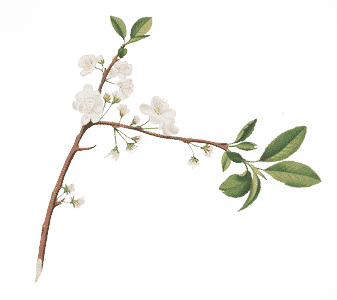
Critical minds recognized quite early on that the so-called green revolution was problematic. Therefore, right at the beginning of the agricultural industrialization process countermovements started to arise, movements that can be seen as the origins of organic farming.
Roused by the dramatic changes and driven by a critical debate on the reigning zeitgeist, some visionaries warned of the damage that would be caused by this development and identified alternatives. Here in Austria, people did not become aware of alternative agriculture until the 1980s, but the origins of this movement date back to the end of the 19th century.

As McNeill reported, the world’s population quadrupled between 1890 and 1990, water consumption increased ninefold and industrial production an astounding fortyfold.

Source: Wikipedia Creative Commons
One of the founding fathers of organic farming and permaculture was the American agronomist Franklin Hiram King. He is regarded as the prime instigator of soil physics in the USA. As early as the end of the 19th and beginning of the 20th century, Franklin King was conducting research into soil fertility, the water retention capacity of soils, water demand characteristics of plants, soil aeration, soil water transport, phreatic water levels, tilling techniques, and much more. As a scientist, he studied for example the effect of covering the soil with mulch as well as of irrigation on field crops and soil biological activity. Research topics that are still high on the agenda of agricultural specialists!
In 1911, King’s influential book ‘Farmers of Forty Centuries’ (F. H. King, Madison, WI, USA) was published. In this book, King writes about “organic farming” – in other words about biologic-organic circular processes – in China, Korea and Japan. King describes these age-old and tried and tested systems as “permanent agriculture”, thereby defining them as a kind of durable, because it is sustainable, agriculture. The first permaculture book remains a classic of organic farming today.
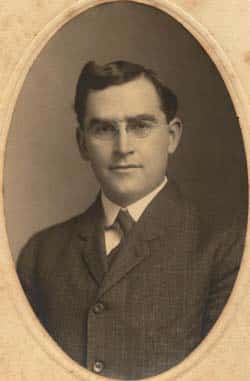
Source: Wikipedia Creative Commons
Along with F. H. King, Russell Smith is also an important pioneer of the permaculture concept. ‘Tree Crops – A Permanent Agriculture’ is the title of his book, which was published in 1929 and promotes agroforestry. His work was strongly influenced by his conviction that any cultivation of land has to be adapted to local conditions. He studied the disastrous consequences of erosion that he always saw when trees had been eliminated from the landscape because of large-scale mechanization.
“Forest – pasture – plow – desert” was his proven-to-be-correct prophecy and he would chide his contemporaries for their immature and wasteful exploitation of natural resources. His studies took him far beyond the borders of the United States and he recognized and described how erosion represents a global problem and that the loss of precious soil appears wherever nature is willfully disregarded. Russell Smith advocated crop rotation, terracing and minimally invasive tilling. He prompted farmers to center their attention above all on the soil.
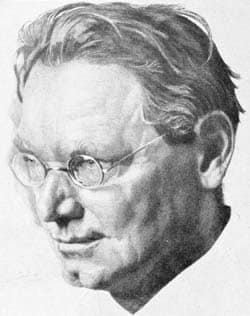
Source: Wikipedia Creative Commons
An Austrian-Hungarian contemporary of Russell Smith, Raoul Heinrich Francé also recognized and described how soil was living matter and had to be handled correspondingly. He is one of the founding fathers of organic farming in Europe. As a botanist, microbiologist, and natural and cultural philosopher, he published more than 60 books.
In 1913, his seminal work ‘Das Edaphon’ (‘The Soil Biota’) describes a concept that comprises the totality of organisms living within the soil. Francé described in this book the amazing diversity of life that exists right under our feet and explained to his contemporaries that soil fertility can be traced back to the activity of countless unseen creatures.
However, this author, who anticipated many modern ecological ideas, was not the first to recognize and describe the importance of soil life.
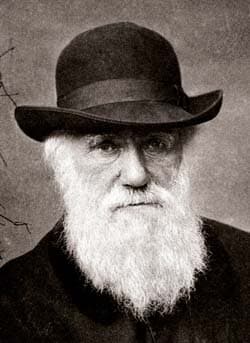
Source: Wikipedia Creative Commons
Charles Darwin, who was a passionate gardener as well as scientist, wrote in 1881 about earthworms: “It may be doubted whether there are many other animals which have played so important a part in the history of the world as have these lowly organized creatures”. The soil nourishes us, it is the basis of all higher developed life, and therefore has to be correspondingly dignified and protected. The increasingly heavy machinery of the industrial age, which makes tilling such a convenient option, leads to measures that compact and ruin the soil. Deep plowing and the application of mineral fertilizers disturb and destroy soil life. The direct consequence is erosion through wind and rain: the precious humus layer that builds up only very slowly erodes and the stones start to grow.
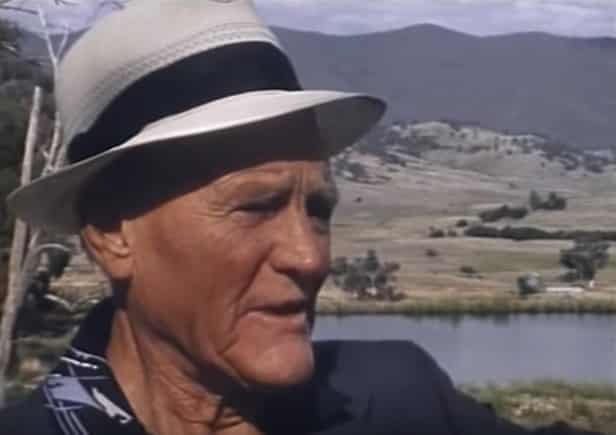
Source: Wikipedia Creative Commons
One of the most important tasks of land cultivation is to avoid these processes. For this purpose, the Australian inventor and engineer P. A. Yeomans developed the concept of the keyline design. Yeomans, who originally worked as a consultant for mining corporations, was an expert in hydrology and geomorphology. He designed farmland in such a way that rain water had the opportunity to spread out over a large part of the area and to seep slowly into the ground. The aim was, as he explained it, to collect all the precipitation water and to avoid soil erosion at the same time.
His book ‘Water for Every Farm – Yeomans Keyline Plan’ of 1954 is a standard work on permaculture. His designs were essential creative impulses for the later developers of the modern concept of permaculture, Bill Mollison and David Holmgren.

Source: Wikipedia Creative Commons
Masanobu Fukuoka, a Japanese microbiologist by profession, lived a similar story. He gave up his career in the Japanese civil service and became a farmer. He developed a farming concept oriented towards natural reciprocal effects and processes. His guiding principle was: study nature and its rhythm and draw your conclusions based on this observation for your farming activities.
His book ‘The One-Straw Revolution’ has had a decisive influence on many alternative farming concepts.
Fukuoka’s fields were surrounded by intensive rice growing, fed with mineral fertilizers and – as he put it – grotesque quantities of pesticides. His method (described in his book titled ‘The Natural Way of Farming – The Theory and Practice of Green Philosophy’, 1985) relied on the natural vitality and power of regeneration of the soil. In his approach, rather than the plant the farmer had to concentrate on nourishing the soil life. Pest insect populations were contained by crop rotation and ecological adversaries, for example by promoting the propagation of spiders or temporarily allowing ducks onto the land. Fukuoka was a scientist and as such he was a vehement opponent of agrochemistry.
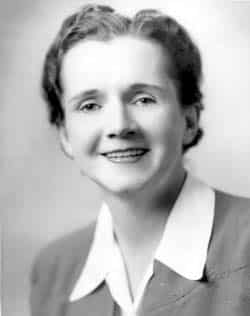
Source: Wikipedia Creative Commons
The destructive power of agrochemistry has been obvious to a critical public since the publication of Rachel Carlson’s book ‘Silent Spring’ in 1962. Carlson was a biologist and environmental journalist and brought to the public’s attention the large-scale use of pesticides by investigating and reporting on their devastating effects on ecosystems through what is today termed popular science.
She identified the widespread use of pesticides as a badly planned and amateurishly performed experiment on the mass destruction of insects, with innumerable undesirable side effects. This highly successful author explained to her audience about the food chain and how the contamination of water and soil leads to an accumulation in living beings of pesticides and the compounds they break down to. She held the American Department of Agriculture directly responsible for the mass elimination of birds, insects, reptiles and mammals.
In the US, her homeland, ‘Silent Spring’ initiated a fiercely conducted political debate and led to the prohibition of the notorious insecticide known as DDT. The success of her book represented the starting point of a worldwide ecological movement that more and more critical scientists would subsequently join.

Source: Wikipedia Creative Commons, Author: Pokatin
René Dubos, a medical doctor, microbiologist and environmentalist, also made an important contribution to the public communication of scientific insights. In 1939, Dubos isolated and analyzed an antibacterial substance he named tyrothricin. It was the very first commercially produced antibiotic substance. His most famous book is ‘So Human an Animal’, published in 1968. The slogan “think globally, act locally” is also accredited to him. He has been quoted as arguing that modern man thinks he has almost complete control of the natural forces that shaped his evolution in the past, and that he can therefore now control his own biological and cultural life. However, like all the other living beings in the world, man is part of a hugely complex ecological system and is interconnected in multiple ways with all the components of this system.
Organic farming concepts have to be seen in the context of the consequences of agricultural industrialization and therefore have their origin at around the same time. That farmers today, 100 years after Darwin and Francé, have to relearn, step by step, about earthworms, soil life and crop rotation can be put down in part to the upheavals of the 20th century and the traumatic disorganization that resulted from the two World Wars and the Great Depression.
As Paul Ehrlich, the renowned American biologist said: “It is the irony of history that the pragmatists of today go back to solutions that they themselves declared as the lunacy of idealists only a short time ago.”
Permaculture does not claim to have reinvented the wheel. We just want to apply all the knowledge that is available in the world so that we can keep it spinning.
One day at a university course, a student asked F. H. King if it was true that he had liberally copied from other cultures and their books. It is said that King’s answer was as follows:
“Yes, I have cribbed from others and I have milked a thousand cows, but the cheese, the cheese is mine!”.
Krameterhof Newsletter
Abonniere den Krameterhof-Newsletter zum Thema Permakultur. Erhalte immer das aktuelle Kursprogramm. Nicht mehr als eine E-Mail pro Monat.
Krameterhof Newsletter
Abonniere den Krameterhof-Newsletter zum Thema Permakultur. Erhalte immer das aktuelle Kursprogramm. Nicht mehr als eine E-Mail pro Monat.
© 2021 Krameterhof • Website Entwicklung studio2.io • Impressum • Datenschutz • Downloads


